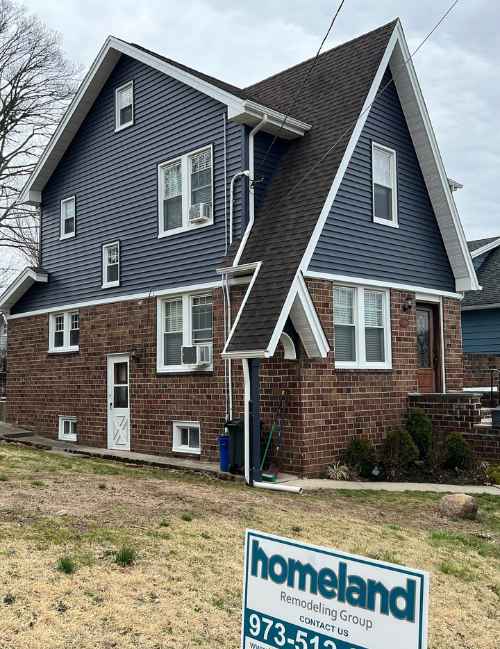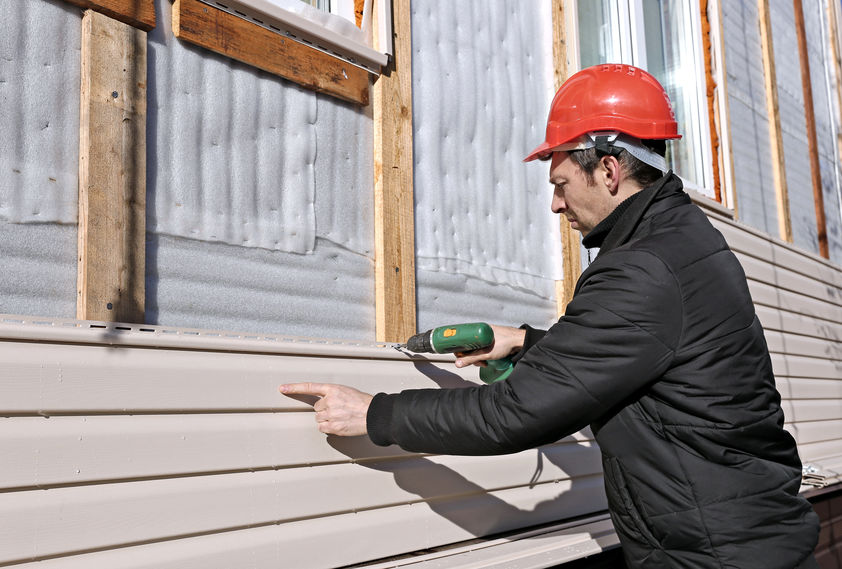Reliable Morris Siding Contractor Specializing in Residential Siding Projects
Reliable Morris Siding Contractor Specializing in Residential Siding Projects
Blog Article
The Necessary Guide to the Different Kinds of Exterior Siding and Their Unique Benefits
In the world of home improvement, choosing the appropriate house siding is a critical choice that impacts both visual allure and functional performance. With so several choices to consider, which exterior siding product absolutely stands out for your specific job?
Wood Home Siding
Timber house siding, a popular option for property exteriors, uses a timeless aesthetic that combines all-natural appeal with structural honesty. This house siding material is readily available in different styles, including clapboard, tiles, and board-and-batten, enabling property owners to personalize their appearance to match their design preferences. Timber house siding is generally crafted from sturdy species such as cedar, redwood, or want, which are recognized for their resilience and capacity to endure environmental stressors.
One of the main benefits of wood house siding is its excellent insulation buildings, which can add to power effectiveness and reduced heating prices. In addition, wood siding is biodegradable, making it an eco-friendly alternative when sourced sustainably. Normal maintenance, including paint or discoloration, can prolong its life-span and improve its look, enabling homeowners to maintain the natural appeal of the wood.
Nonetheless, prospective drawbacks consist of vulnerability to parasites, rot, and weather condition damages, demanding appropriate therapy and upkeep - morris siding contractor. In spite of these problems, when appropriately cared for, timber siding can provide a beautiful and durable remedy that improves the personality of a home while using a cozy, welcoming ambience

Plastic Siding
Plastic house siding has become a leading option for home owners seeking a low-maintenance outside option that combines resilience and cost. This functional material is crafted from polyvinyl chloride (PVC), making it immune to various climate condition, including moisture and UV rays. As an outcome, vinyl siding does not warp, rot, or discolor, making certain lasting visual charm.
Among the main advantages of plastic siding is its substantial variety of styles and shades, permitting property owners to attain the desired search for their building without the demand for constant repainting. Additionally, vinyl exterior siding is simple to set up, which can substantially decrease labor costs throughout building and construction or renovation tasks.
Vinyl house siding also contributes to power efficiency. Many choices attribute insulation support, which enhances thermal efficiency, assisting to keep comfy interior temperature levels and possibly reducing energy bills. Its smooth surface promotes easy cleaning, calling for just routine cleaning with a yard pipe to remove dirt and debris.
Fiber Concrete Home Siding
Fiber cement siding has actually gotten grip among house owners and builders alike due to its impressive combination of toughness and aesthetic flexibility. Composed of a mixture of sand, concrete, and cellulose fibers, this house siding choice is crafted to withstand extreme climate condition, consisting of high winds, hefty rain, and temperature level variations, making it a durable option for household outsides.

One of the main benefits of fiber concrete exterior siding is its resistance to insects, such as termites, and its non-combustible nature, offering boosted fire security. morris siding contractor. Furthermore, it is offered in a vast array of colors, designs, and textures, allowing property owners to achieve their desired visual without giving up efficiency
An additional advantage is its low maintenance demands; fiber cement home siding normally needs painting or staining every 5-10 years, which is less regular than other products. Its long life adds to a reduced general cost of ownership, as it decreases the requirement for frequent repair services or substitutes.
Inevitably, fiber concrete siding stands for an outstanding investment for those seeking a resilient, eye-catching, and functional outside choice, combining both form and feature to boost the home's aesthetic allure.
Metal Siding
The attraction of steel exterior siding depends on its durable toughness and modern visual appeal, making it Continue a favored choice for modern style. Offered in materials such as light weight aluminum and steel, metal house siding offers a range of finishes and shades, enabling house owners to attain a tailored appearance that complements their layout vision.

Power performance is one more substantial benefit, as several metal home siding items are designed with insulation options that help regulate indoor temperature levels. This can result in reduced energy prices gradually. Furthermore, metal exterior siding is commonly recyclable, making it an environmentally friendly option for sustainability-minded house owners.
The installment process for metal house siding can be relatively uncomplicated, resulting in a quicker turnaround time for building and construction tasks. In general, steel siding integrates capability and design, making it a useful alternative for those seeking a enduring and aesthetically enticing outside surface.
Block and Stone Home Siding
Block and rock exterior siding stands apart as a timeless selection that boosts the visual beauty of any type of home. Recognized for their toughness and reduced maintenance, these materials give an exceptional roi while raising the residential or commercial property's curb appeal. Readily available in numerous colors, textures, and patterns, brick and rock can be customized to match varied architectural designs, from traditional to modern.
Among the primary advantages of block and stone home siding is their energy performance. Both products have all-natural insulating residential properties that help manage indoor temperature levels, possibly reducing cooling and heating prices. In addition, they provide exceptional fire resistance compared to various other exterior siding options, adding to improved safety and security.
Another benefit is their durability. Brick and rock can last for decades, usually requiring marginal maintenance past periodic cleaning. Unlike wood exterior siding, they are unsusceptible insects and rot, making sure a long-lasting exterior that withstands the aspects.
Conclusion
In recap, the selection of exterior siding significantly impacts a home's aesthetic appeal, power performance, and maintenance needs. Each kind of siding-- whether wood, vinyl, fiber brick, steel, or cement and stone-- uses distinct advantages customized to various homeowner choices and environmental conditions.
One of the main advantages of timber exterior siding is its exceptional insulation residential or commercial properties, which can contribute to energy efficiency and reduced heating expenses. In addition, wood siding is naturally degradable, making it an environmentally friendly alternative when sourced sustainably.One of the main advantages of steel exterior siding is its resistance to different environmental variables.Power effectiveness is another significant advantage, as numerous metal home siding products are created with insulation options that aid control interior temperatures. Each kind of house siding-- whether wood, plastic, fiber steel, cement, or block and Discover More Here rock-- provides special advantages customized to different home owner preferences and environmental problems.
Report this page